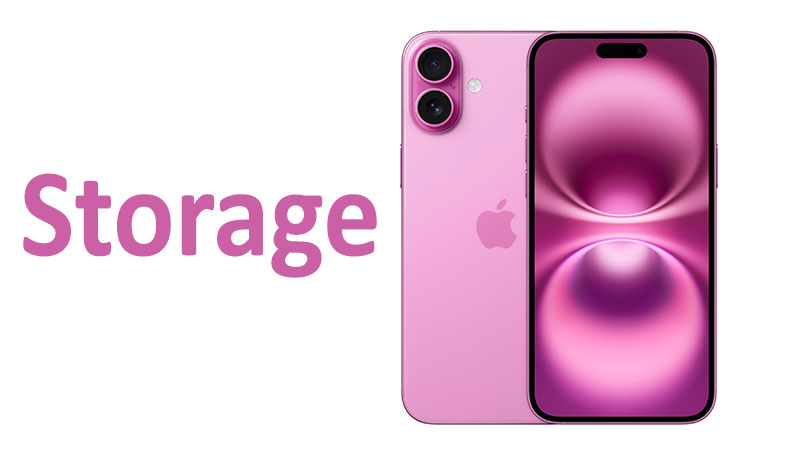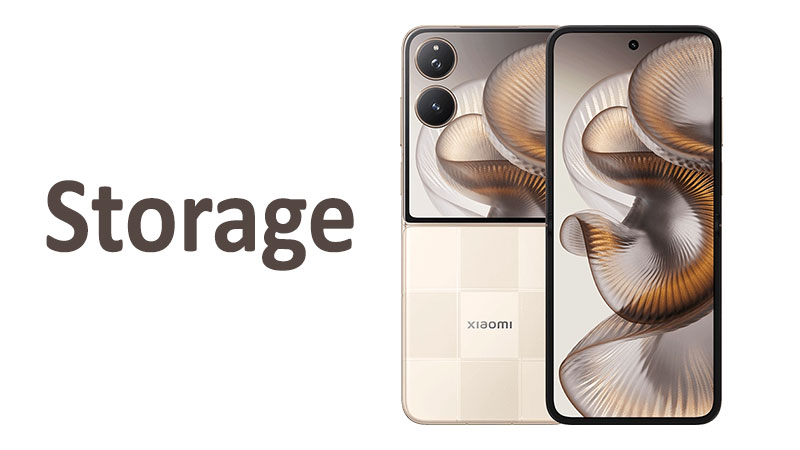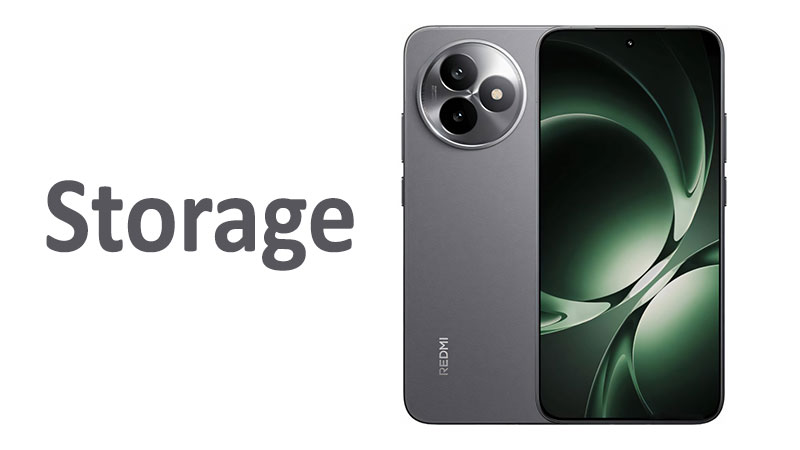Choosing a new smartphone is a significant decision. The storage capacity is one of the most important factors. It directly impacts how you use your phone. The Apple iPhone 16 Plus continues this tradition. It offers a range of storage options. These options cater to different user needs. Understanding the available Apple iPhone 16 Plus storage options is crucial. It ensures you get a device that meets your lifestyle. This comprehensive guide explores all aspects of the iPhone 16 Plus storage. We will look at its capacity, type, and what it means for you.
A Detailed Look at Storage Capacity
The iPhone 16 Plus provides three distinct storage tiers. These options are the same as the base iPhone 16 model. They offer a good range for most consumers. Unlike the iPhone 16 Pro, it does not include a 1TB option.
The available capacities are:
- 128GB: The entry-level option.
- 256GB: The middle-tier, popular choice.
- 512GB: The high-end option for the standard model.
Apple has kept these tiers consistent with recent releases. This strategy gives users a clear choice. It helps them balance cost and usability.
Specialized Comparisons: iPhone 16 Plus vs. iPhone 15 Plus
Comparing the iPhone 16 Plus to its predecessor is useful. The iPhone 15 Plus also offered 128GB, 256GB, and 512GB storage options. In terms of sheer capacity, there is no change. The storage tiers remain identical.
However, the new iPhone 16 Plus introduces more demanding features. These features include advanced camera functions. It also has new on-device AI capabilities with Apple Intelligence. This means that while the storage numbers are the same, the requirements on that storage may be greater. High-resolution photos and 4K videos take up more space. The new software features might also increase storage usage over time. Therefore, a 128GB iPhone 16 Plus might feel more constrained than a 128GB iPhone 15 Plus.
When comparing to competitors, like high-end Android phones, the iPhone 16 Plus holds its own. Many Android flagships also start at 128GB. However, some offer a 1TB option in their top-tier non-Pro models. The key difference remains the lack of expandable storage on the iPhone. Android devices often have a microSD card slot. This is a significant point for some users.
The Type of Storage: NVMe Technology
Apple has used NVMe (Non-Volatile Memory Express) flash storage for years. The iPhone 16 Plus continues this trend. NVMe storage is incredibly fast. It is a standard for high-performance SSDs in computers. This technology ensures quick data access. This includes fast app loading, file transfers, and video recording.
Apple’s integration of NVMe is a key differentiator. It provides a significant speed advantage. This is particularly noticeable in demanding tasks. For example, shooting and editing 4K video is seamless. The fast storage helps with Apple’s new on-device AI features. Data-intensive tasks are processed efficiently.
This high-speed storage is what enables the smooth iOS experience. It contributes to the overall snappy performance of the device. Many Android phones use UFS (Universal Flash Storage). UFS is also fast, with the latest versions rivaling NVMe. However, Apple’s implementation is highly optimized. This optimization is what delivers such a fluid user experience.
Pros and Cons of the Storage Options
Let’s break down the advantages and disadvantages. This will help you decide which storage size is right for you.
128GB iPhone 16 Plus
Pros:
- Most Affordable: This is the cheapest entry point into the iPhone 16 Plus lineup. It makes the phone accessible to more people.
- Sufficient for Light Users: If you primarily stream media and use cloud storage, 128GB is enough. It’s for users who don’t store a lot of data locally.
- Good for Cloud-Centric Lifestyles: Users who rely on iCloud, Google Photos, or other cloud services will find this sufficient.
Cons:
- Future-Proofing Issues: As apps and the OS grow, 128GB can quickly feel limited. This is especially true if you keep your phone for several years.
- Limits High-End Features: It restricts your ability to shoot long-form 4K video. It also limits the use of certain large-scale apps or games.
- Requires Constant Management: You may need to regularly delete photos, videos, and apps to free up space.
256GB iPhone 16 Plus
Pros:
- Best All-Rounder: This capacity offers the best balance of price and storage. It is the most popular choice for a reason.
- Ideal for Most Users: It provides ample space for photos, videos, apps, and games. It works well for a majority of users.
- More Freedom: You don’t have to worry about managing your storage constantly. You can download movies, music, and apps without hesitation.
Cons:
- Higher Cost: It is more expensive than the 128GB base model.
512GB iPhone 16 Plus
Pros:
- Perfect for Content Creators: This is the ideal choice for people who shoot a lot of high-resolution content. It is a must-have for aspiring filmmakers and vloggers.
- No Storage Worries: You will likely never fill this phone up. You can install every app and store thousands of photos and videos.
- Long-Term Investment: This size is highly future-proof. It ensures your phone will handle new software and file types for years to come.
Cons:
- Expensive: This is the most expensive option. The price jump can be significant. It puts the phone’s cost close to the Pro models.
Important Points for the Buyer
Before you buy, consider your personal usage habits. Think about how you use your phone on a daily basis.
Do you take many photos and videos?
If you are a casual photographer, 128GB might be fine. But if you take thousands of photos and film in 4K, 256GB is a safer bet. If you are a professional, 512GB is the minimum.
Do you download a lot of media?
Downloading movies, TV shows, or extensive music libraries takes up space. A 256GB or 512GB model is essential for this. Streaming is an alternative, but it requires a constant internet connection.
How long do you plan to keep your phone?
If you upgrade every one or two years, a 128GB model might suffice. If you plan to keep your iPhone 16 Plus for three years or more, consider the 256GB or 512GB options. You will appreciate the extra space later.
Do you use many large apps or games?
Mobile games can be several gigabytes in size. Apps like graphic editors also consume a lot of space. If you are a mobile gamer or a creative professional, choose a higher storage tier.
Remember that iPhone storage is not expandable. You cannot add a microSD card later. The decision you make at the time of purchase is permanent. This makes choosing the right capacity even more critical.
The Lack of Expandable Storage
Apple’s decision to not include a microSD card slot is a major point. It’s a deliberate design choice. It allows them to maintain a consistent user experience. They can control the speed and quality of the storage. It also encourages users to rely on iCloud.
While some users see this as a limitation, others see it as a benefit. It prevents the use of slow, unreliable third-party storage. It ensures a seamless and fast experience. For the user, it means you must plan ahead. You have to buy the storage you will need for the entire life of the phone.
Conclusion
Choosing the right Apple iPhone 16 Plus storage option is a personal decision. It should be based on your usage patterns. The 128GB model is perfect for the light user. This is someone who streams content and relies heavily on the cloud. The 256GB model is the best option for the majority of people. It provides a great balance of cost and functionality. It future-proofs the device for a few years. Finally, the 512GB model is for heavy users and content creators. It offers a worry-free experience with maximum storage space.
The NVMe flash storage in the iPhone 16 Plus ensures top-tier performance. This makes the phone fast and responsive. While the lack of expandable storage is a constraint, it is a known aspect of the iPhone ecosystem. The key is to make an informed choice upfront. Don’t be tempted by the lower price of the 128GB model if you are a heavy user. The cost of convenience and peace of mind is worth it.
FAQ
What are the available storage capacities for the iPhone 16 Plus?
The iPhone 16 Plus comes in three storage options: 128GB, 256GB, and 512GB.
Does the iPhone 16 Plus have expandable storage?
No, the iPhone 16 Plus does not have a microSD card slot. Its internal storage is fixed and cannot be expanded.
Is 128GB enough for the iPhone 16 Plus?
128GB is sufficient for light users who primarily stream media, use cloud services, and take a moderate number of photos. For heavy use, it is not recommended.
What type of storage does the iPhone 16 Plus use?
The iPhone 16 Plus uses Apple’s custom NVMe (Non-Volatile Memory Express) flash storage. This technology is known for its high speed.
How does the iPhone 16 Plus’s storage compare to the iPhone 15 Plus?
The iPhone 16 Plus and iPhone 15 Plus have the same storage tiers (128GB, 256GB, 512GB). However, the iPhone 16 Plus’s new features may require more storage space for a similar usage pattern.



